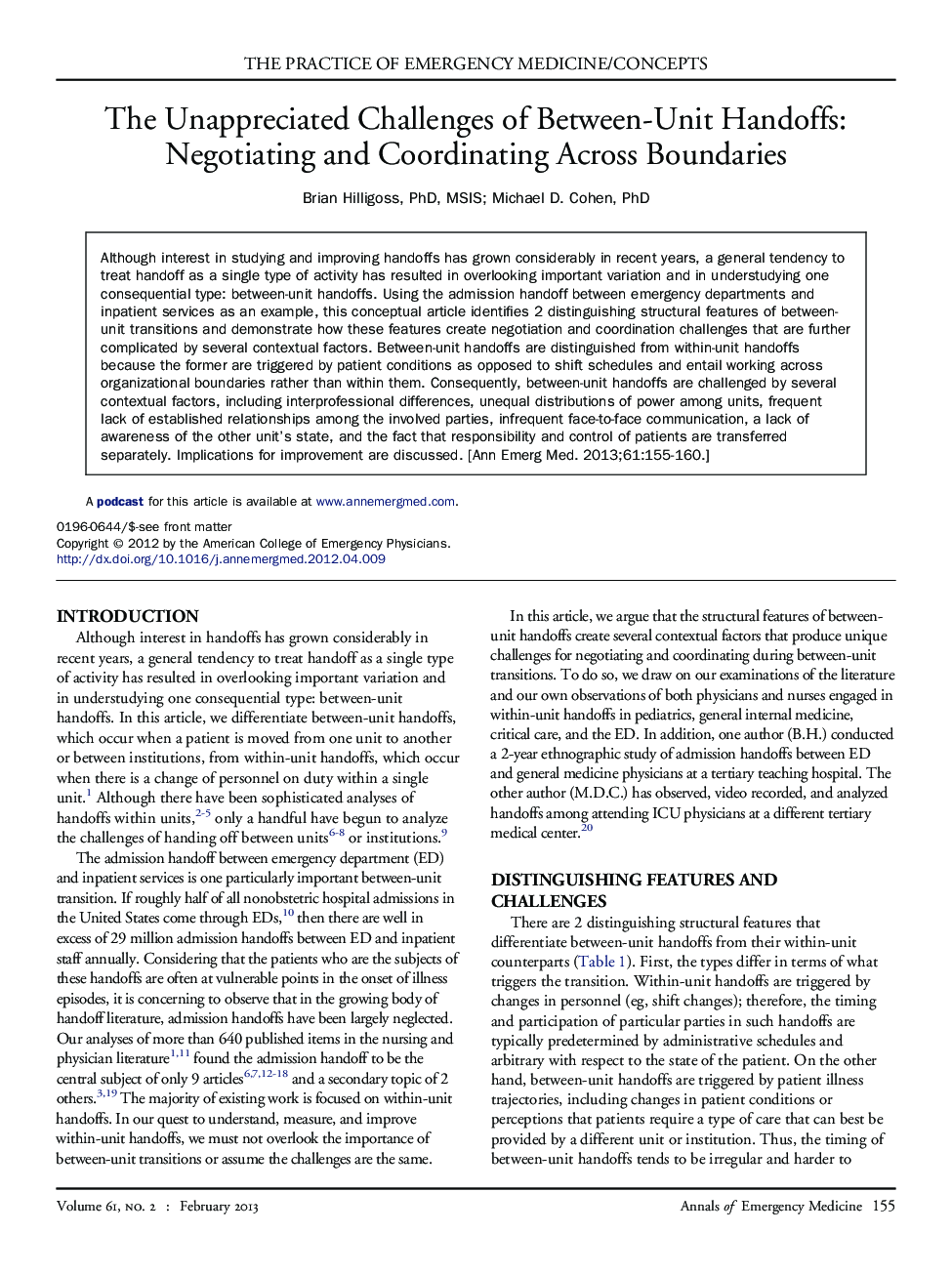| Article ID | Journal | Published Year | Pages | File Type |
|---|---|---|---|---|
| 3229929 | Annals of Emergency Medicine | 2013 | 6 Pages |
Although interest in studying and improving handoffs has grown considerably in recent years, a general tendency to treat handoff as a single type of activity has resulted in overlooking important variation and in understudying one consequential type: between-unit handoffs. Using the admission handoff between emergency departments and inpatient services as an example, this conceptual article identifies 2 distinguishing structural features of between-unit transitions and demonstrate how these features create negotiation and coordination challenges that are further complicated by several contextual factors. Between-unit handoffs are distinguished from within-unit handoffs because the former are triggered by patient conditions as opposed to shift schedules and entail working across organizational boundaries rather than within them. Consequently, between-unit handoffs are challenged by several contextual factors, including interprofessional differences, unequal distributions of power among units, frequent lack of established relationships among the involved parties, infrequent face-to-face communication, a lack of awareness of the other unit's state, and the fact that responsibility and control of patients are transferred separately. Implications for improvement are discussed.
